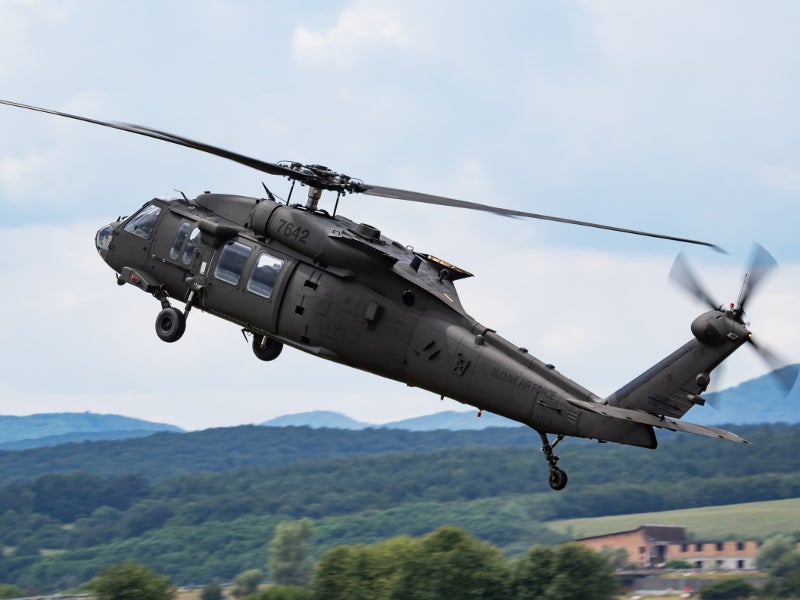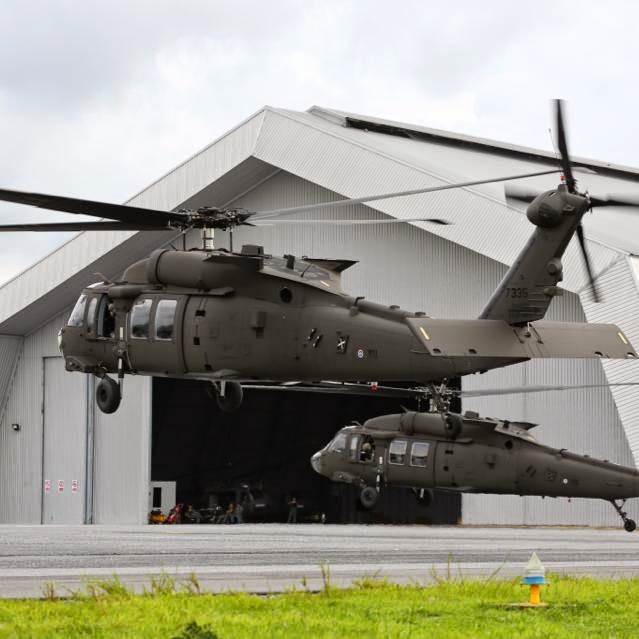The Future of Uh 60 Helicopters: Innovations and Patterns
As the aviation industry progresses, the evolution of rotorcraft innovation, particularly within the realm of UH-60 helicopters, has actually been a centerpiece for advancement and improvement. The future of UH-60 helicopters holds guarantees of advanced growths that are poised to reshape the abilities and capabilities of these versatile airplane. With improvements in avionics systems, autonomous trip capacities, boosted gas efficiency, advanced composite materials, and enhanced objective adaptability, the landscape of UH-60 helicopters gets on the edge of a makeover that will certainly not only redefine their functional performance yet also lead the way for new possibilities in airborne movement.

Enhanced Avionics Equipments
Improved Avionics Solutions play a pivotal role in modernizing and improving the operational abilities of Uh-60 helicopters. These systems usually include cutting-edge radar, sensor, and data processing capabilities, enabling Uh-60 helicopters to operate more efficiently in diverse environments and mission scenarios.
Furthermore, Enhanced Avionics Systems add to boosted precaution by supplying attributes such as surface recognition and caution systems, website traffic crash evasion systems, and auto-pilot performances. These elements not only reduce the work on pilots however likewise enhance overall trip security and operational efficiency. As modern technology remains to progress, the integration of enhanced avionics systems will undoubtedly play a crucial duty fit the future capabilities and effectiveness of Uh-60 helicopters in various operational contexts.
Autonomous Trip Capabilities
With advancements in modern technology and air travel, the integration of independent trip abilities is reinventing the functional landscape of Uh-60 helicopters. Independent flight systems in Uh-60 helicopters are developed to enhance mission effectiveness, reduce human work, and enhance general safety. These systems use expert system, sensing units, and progressed algorithms to make it possible for autonomous liftoff, landing, navigation, and even obstacle avoidance.
One trick facet of autonomous flight capacities in Uh-60 helicopters is the ability to operate in complex atmospheres and difficult weather problems with marginal human treatment. These capabilities not only boost functional performance however likewise permit extensive objective durations and improved situational recognition.
Moreover, autonomous flight systems can help pilots in performing accurate maneuvers, such as airborne refueling and development traveling, with enhanced sychronisation and precision - uh 60. By leveraging self-governing technologies, Uh-60 helicopters can adjust to vibrant goal demands promptly and effectively, guaranteeing objective success in diverse functional situations. The consolidation of self-governing flight capabilities stands for a substantial leap forward in boosting the convenience and performance of Uh-60 helicopters in modern-day military and noncombatant applications
Improved Fuel Performance
Making use of advanced propulsion systems and structured style improvements, Uh-60 helicopters have attained notable gains in fuel effectiveness, establishing a new standard for operational sustainability. These developments in fuel performance have been mostly driven by the assimilation of even more fuel-efficient engines, aerodynamic enhancements, and making use of sophisticated products to lower weight.

Moreover, the fostering of composite products in the airframe building and construction has actually helped to reduce the overall weight of Uh-60 helicopters, resulting in lower fuel consumption. The lighter weight not only enhances fuel efficiency but also enhances the helicopter's performance and agility.
Advanced Composite Materials
The assimilation of sophisticated composite materials in Uh-60 helicopters has actually reinvented their structural toughness and sturdiness. By utilizing these light-weight yet robust materials, suppliers can minimize the helicopter's weight, Read Full Article leading to improved gas efficiency and increased haul capability.
In addition to their weight-saving residential properties, advanced composite products also show exceptional resistance to corrosion and exhaustion, resulting in reduced maintenance needs and longer operational life-spans for Uh-60 helicopters. The enhanced longevity of composites aids reduce the results of constant resonance and stress throughout trip, making sure the architectural stability of the airplane over time.
Moreover, these materials allow developers to create complicated forms and frameworks that were previously unattainable with standard products. This flexibility in style boosts aerodynamic efficiency and enables for cutting-edge configurations that enhance efficiency and ability to move. Overall, the consolidation of innovative composite products represents a significant leap ahead in the advancement of Uh-60 helicopters, leading the way for advanced, reliable, and sturdy rotorcraft in the future.
Enhanced Mission Flexibility
The use of sophisticated composite products in Uh-60 helicopters has not just boosted architectural toughness and durability but has also contributed considerably to their improved objective versatility. These products use a high strength-to-weight proportion, enabling the development of lighter yet durable elements that enhance the general performance of the aircraft. This reduced weight translates into increased payload ability, expanded trip array, and improved maneuverability, all of which are important elements in broadening the goal adaptability of Uh-60 helicopters.
In addition, the unification of advanced composite materials enables the layout of complex and aerodynamic shapes that were previously unattainable with typical products. This development leads to enhanced gas performance and reduced maintenance demands, further improving the functional convenience of Uh-60 helicopters. The enhanced mission adaptability given by these products permits a larger variety of goal profiles to be undertaken, consisting of transport, rescue and search, medical discharge, reconnaissance, and a lot more, making Uh-60 helicopters important assets in numerous operational circumstances.

Conclusion
Finally, the future of UH-60 helicopters is guaranteeing with developments in improved avionics systems, self-governing flight abilities, enhanced gas effectiveness, advanced composite materials, and enhanced mission flexibility. These advancements will certainly boost the efficiency, security, and efficiency of UH-60 helicopters in various missions. uh 60. The ongoing growth and combination of click over here these innovations will ensure that UH-60 helicopters remain an essential property for armed forces and civilian procedures in site link the years to come

Autonomous trip systems in Uh-60 helicopters are created to enhance goal performance, decrease human workload, and boost general safety. The unification of self-governing flight capacities represents a significant jump forward in boosting the adaptability and performance of Uh-60 helicopters in modern-day armed forces and civilian applications.
The use of advanced composite products in Uh-60 helicopters has not only boosted structural toughness and toughness but has actually also added significantly to their boosted mission adaptability - uh 60. The enhanced goal adaptability supplied by these materials permits for a larger array of mission accounts to be undertaken, including rescue, transportation and search, medical discharge, reconnaissance, and more, making Uh-60 helicopters vital assets in different functional scenarios
In final thought, the future of UH-60 helicopters is assuring with innovations in improved avionics systems, independent trip capabilities, enhanced gas performance, advanced composite materials, and improved goal adaptability.